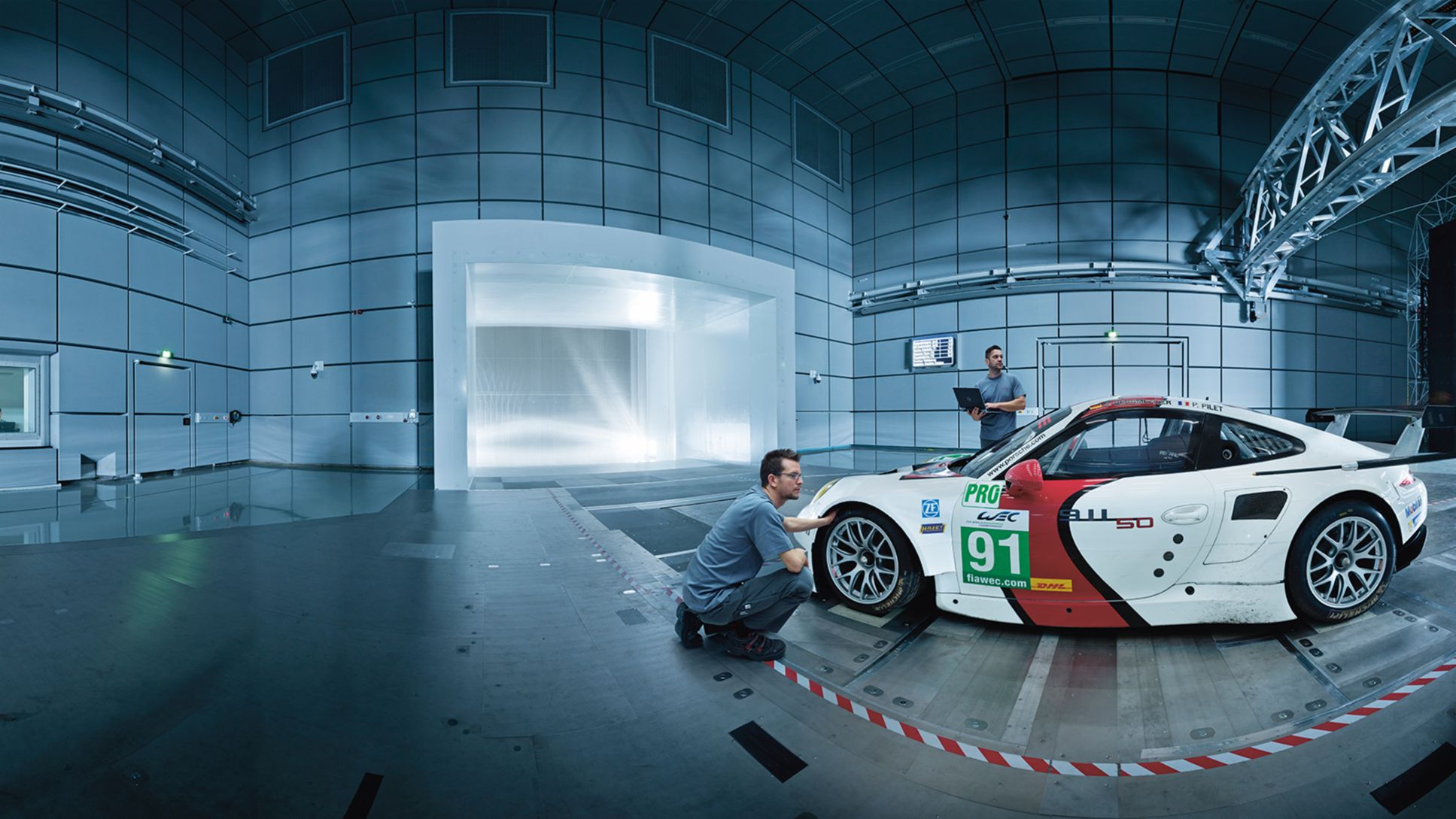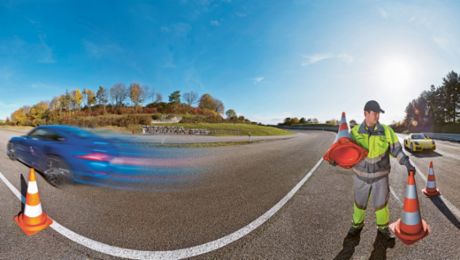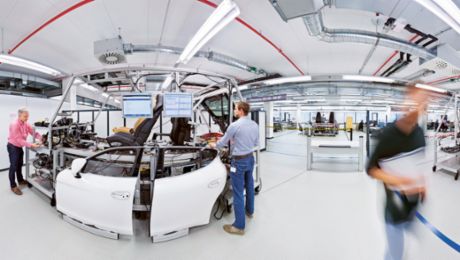The core objectives of the new wind tunnel lie in more energy-efficient aerodynamics, even greater motoring safety and even better comfort for future vehicle generations. “We use the wind tunnel on numerous occasions between an early development stage in design studies and the testing of vehicles ready for full production,” explains Dr Michael Steiner, Head of Total Vehicle Development/Quality.
The high-tech wind tunnel sets new standards in airflow quality by producing air that is both uniform and low in turbulence and noise. Measuring eight metres in diameter, the fan has extremely lightweight carbon vanes and can generate wind speeds of up to 300 km/h in the measurement section around the test vehicle.
The wind tunnel has a closed air circuit and boasts impressive efficiency figures
While aerodynamic measurements are being taken, the ground below the test object and its surroundings are also moved at the wind's speed. “This ensures an airflow that closely approximates reality along the entire underside of the vehicle and around its rotating wheels,” explains Dr Steiner.
The latter are driven at identical speed by conveyor belts arranged within the surface of the wind tunnel weighbridge. Mounted on its own isolated foundations, the sub-floor weighbridge measures the forces being exerted on the model with extreme accuracy and reproducibility for all measured quantities. Noise-damping measures in the air circuit and the sound-absorbing inner walls of the measurement section result in an extremely quiet flow of air around the vehicle. “This makes it possible to identify any sources of noise coming from the vehicle with great precision,” emphasises Dr Steiner.
Highly sensitive acoustic instrumentation around the test object localises any such sound sources three-dimensionally. The wind tunnel has a closed air circuit and boasts impressive efficiency figures. When the fan is slowed down after a measurement, a large part of the brake energy is fed back into the power grid.




